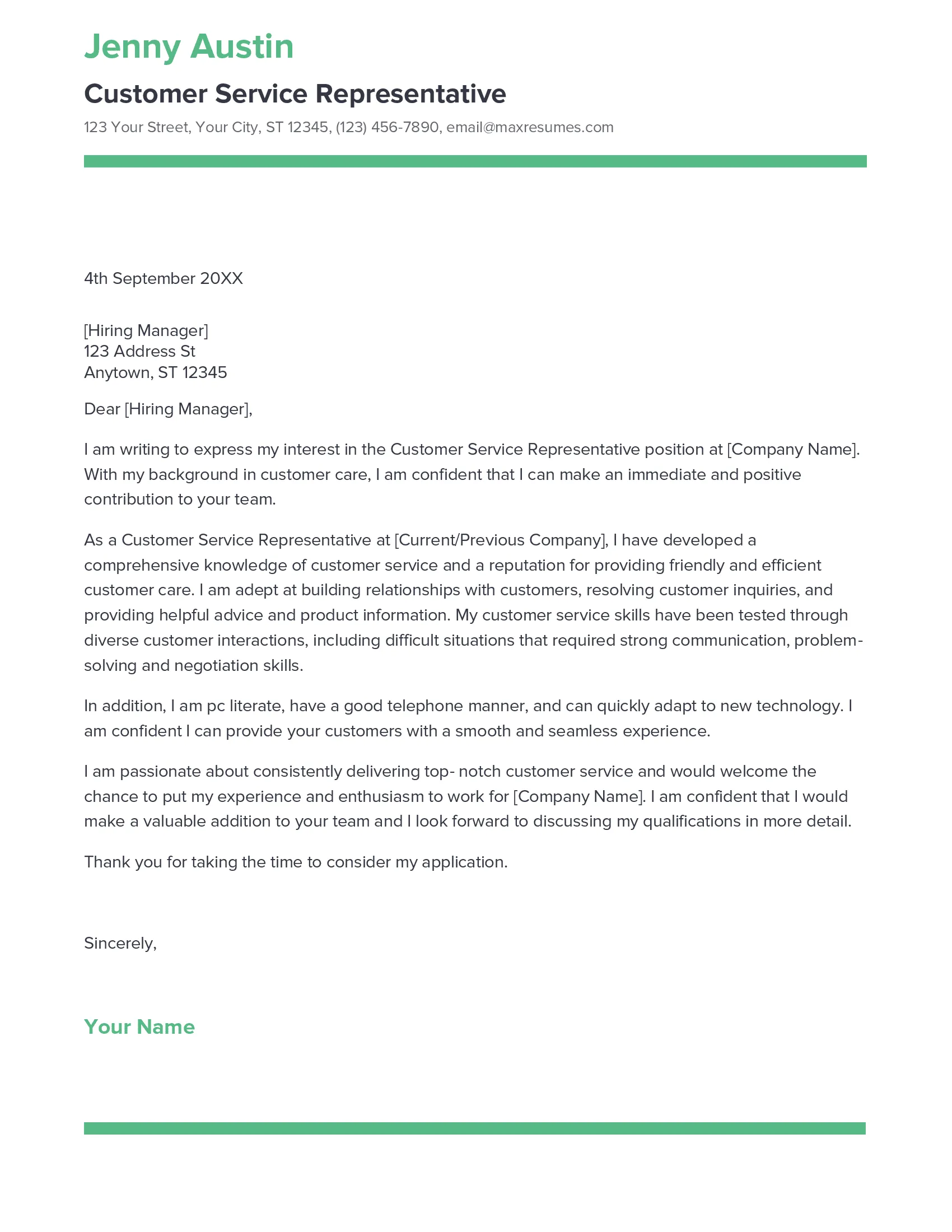Crafting a Winning Client Services Cover Letter
A well-crafted cover letter is your first impression when applying for a Client Services Representative position. It’s your opportunity to showcase your skills, experience, and personality, setting you apart from other applicants. A winning cover letter is not just a formality; it’s a strategic tool that can significantly increase your chances of landing an interview. This guide will help you master the art of writing a compelling cover letter that gets results. We’ll break down each element, from understanding the role and structuring your letter to highlighting your key skills and tailoring your message for maximum impact. Prepare to transform your job application and take the next step toward your career goals.
Understanding the Role of a Client Services Representative
Before you start writing, it’s essential to fully grasp the responsibilities of a Client Services Representative. This understanding will help you tailor your cover letter to highlight the most relevant skills and experiences. Client Services Representatives act as the primary point of contact for customers, providing support, resolving issues, and ensuring customer satisfaction. They are the bridge between the company and its clients, playing a crucial role in building and maintaining positive relationships. Success in this role hinges on the ability to communicate effectively, solve problems efficiently, and demonstrate empathy.
Key Responsibilities and Skills
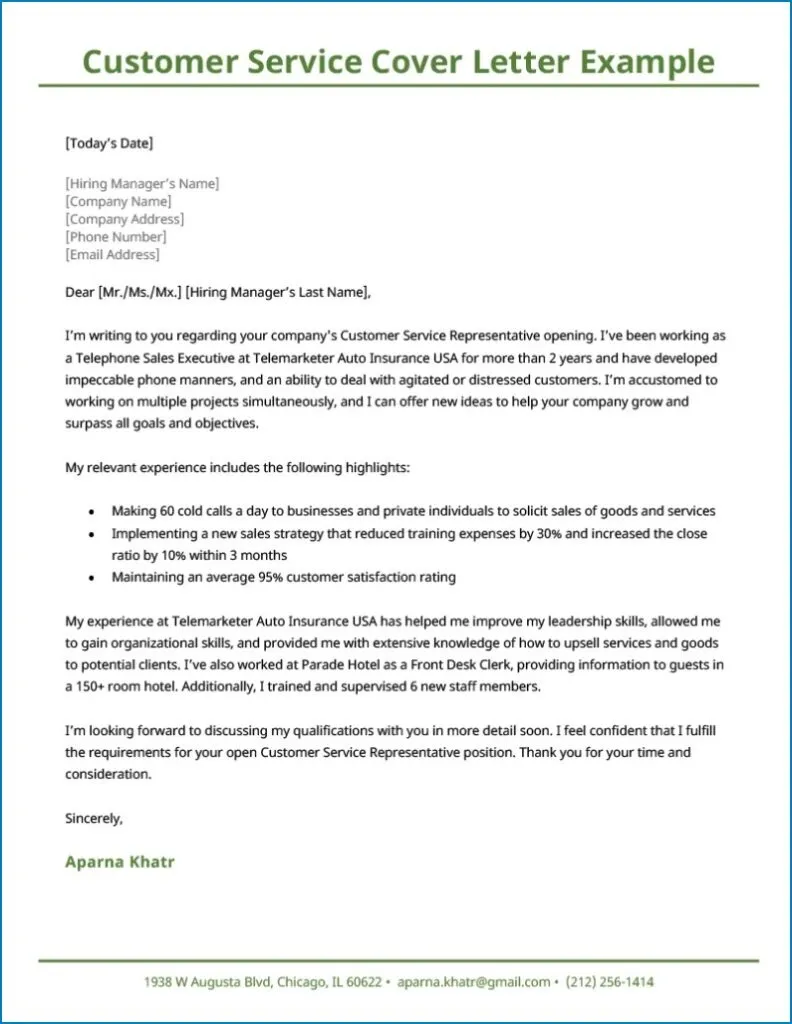
Client Services Representatives typically handle a variety of tasks. These tasks include responding to customer inquiries via phone, email, and chat; resolving customer complaints and issues; providing product or service information; processing orders and returns; maintaining customer records; and collaborating with other departments to ensure customer satisfaction. The essential skills required include excellent communication skills, both written and verbal; strong problem-solving abilities; the ability to remain calm and patient under pressure; proficiency in using CRM software; and a customer-centric mindset. Highlighting these skills in your cover letter will significantly increase your appeal to potential employers.
Why a Cover Letter Matters
In today’s competitive job market, a cover letter is not just a formality – it’s a critical component of your job application. It provides you with a dedicated space to elaborate on your qualifications, explain your interest in the specific role and company, and connect your skills and experiences to the job’s requirements. A well-written cover letter demonstrates your communication skills, attention to detail, and your genuine interest in the position. It helps you go beyond the basic information provided in your resume and shows potential employers the value you would bring to their team. In short, it gives you the opportunity to make a lasting impression.
First Impressions
Your cover letter creates an initial impression, so it should be impeccable. Start with a strong opening that captures the reader’s attention and clearly states your objective. The first few sentences are crucial, as they set the tone for the rest of the letter. Avoid generic greetings and phrases; instead, personalize your letter by addressing the hiring manager by name whenever possible. Clearly state the position you are applying for, and express your enthusiasm for the opportunity. This sets the stage for the rest of the letter and encourages the reader to continue.
Highlighting Relevant Experience
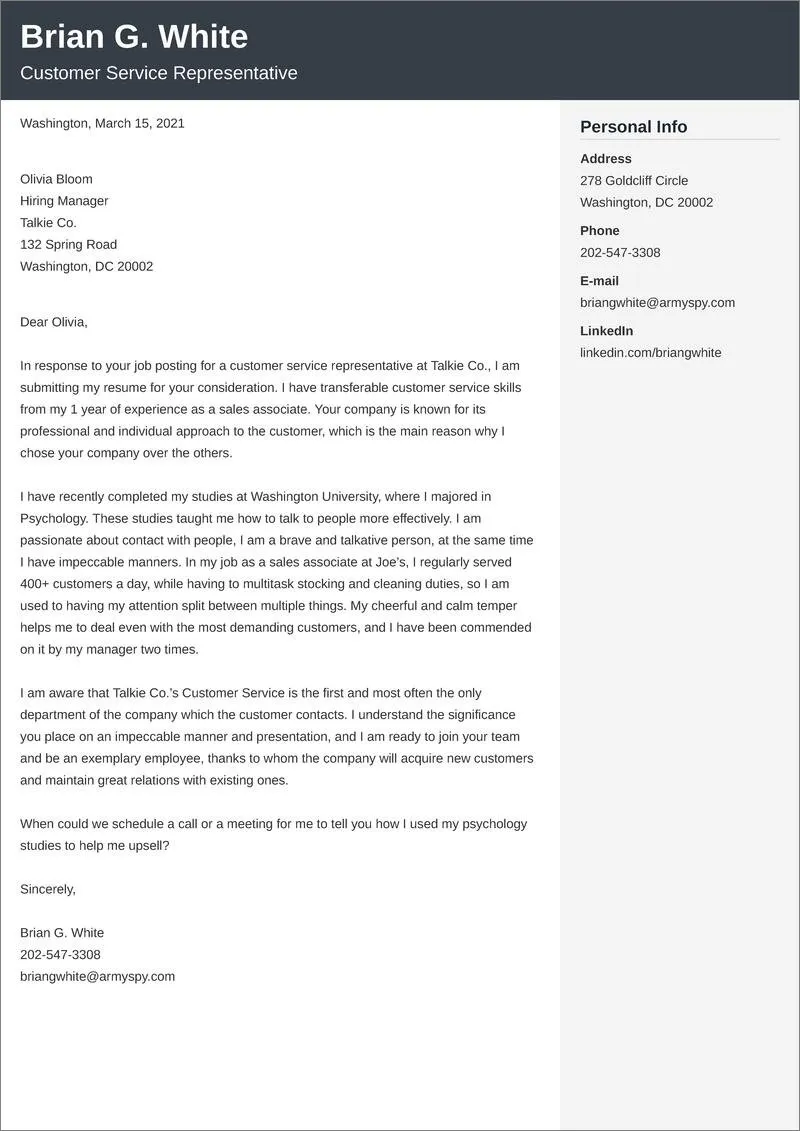
Focusing on your experience, identify the key skills and experiences mentioned in the job description and how they align with your background. Provide concrete examples of how you have successfully used these skills in previous roles. Quantify your achievements whenever possible. Use numbers and data to demonstrate your impact. For instance, rather than saying ‘Improved customer satisfaction,’ you could say ‘Increased customer satisfaction scores by 15%.’ This shows employers the value you can bring to their company and the results you are able to achieve.
Structuring Your Cover Letter
A well-structured cover letter is easy to read and highlights the most important information. It should have a clear and logical flow. Your cover letter should be divided into several key sections, each serving a specific purpose. This section provides a detailed breakdown of how to structure your cover letter for maximum impact. Each part of your cover letter plays a vital role in creating a lasting positive impression. A well-organized structure shows that you can communicate clearly and concisely.
Contact Information and Salutation
Start by providing your contact information at the top of the letter, including your name, phone number, email address, and LinkedIn profile (if you have one). This makes it easy for the hiring manager to contact you. Always address the hiring manager by name. Research their name on LinkedIn or the company website. A personalized salutation like ‘Dear Ms. Smith’ demonstrates that you’ve taken the time to research the company and shows respect. If you are unable to find the name, use ‘Dear Hiring Manager’ as the last resort.
Opening Paragraph: Making an Impact
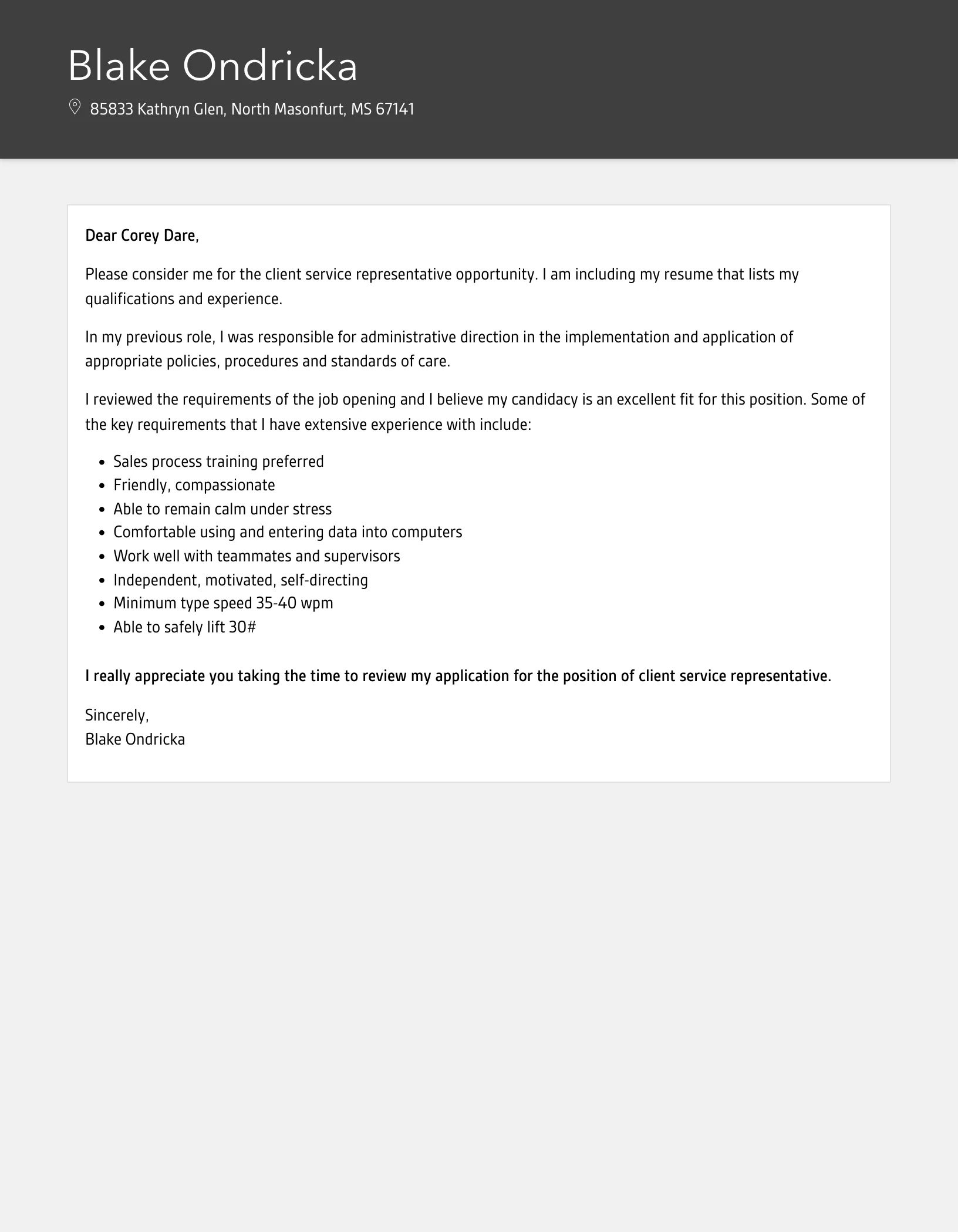
The opening paragraph sets the tone for your cover letter. Begin with a strong hook that immediately grabs the reader’s attention. State the specific position you’re applying for, where you saw the job posting, and why you are interested in the role and the company. If you have a personal connection to the company or its mission, briefly mention it here. This establishes your enthusiasm and demonstrates you’ve done your homework. Keep your opening paragraph concise and focused on making a positive first impression.
Body Paragraphs: Showcasing Your Value
The body paragraphs are where you showcase your skills, experiences, and achievements. This is the main section of your cover letter. Focus on the key requirements listed in the job description, and explain how your experience aligns with those requirements. Use specific examples to illustrate your skills and quantify your achievements. Demonstrate your customer service skills, communication abilities, and problem-solving skills. Avoid simply restating your resume; use the cover letter to provide additional context and explain how your experiences have prepared you for the position.
Quantifying Achievements
Quantify your accomplishments whenever possible. Use numbers, percentages, or data to demonstrate the impact you’ve made in previous roles. For example, ‘Reduced customer complaint resolution time by 20%’ or ‘Increased customer retention rates by 10%’. Quantitative data provides concrete evidence of your abilities and the value you bring to the company. It makes your accomplishments more compelling and helps you stand out from other applicants. It also demonstrates your ability to measure and improve performance.
Tailoring Your Letter
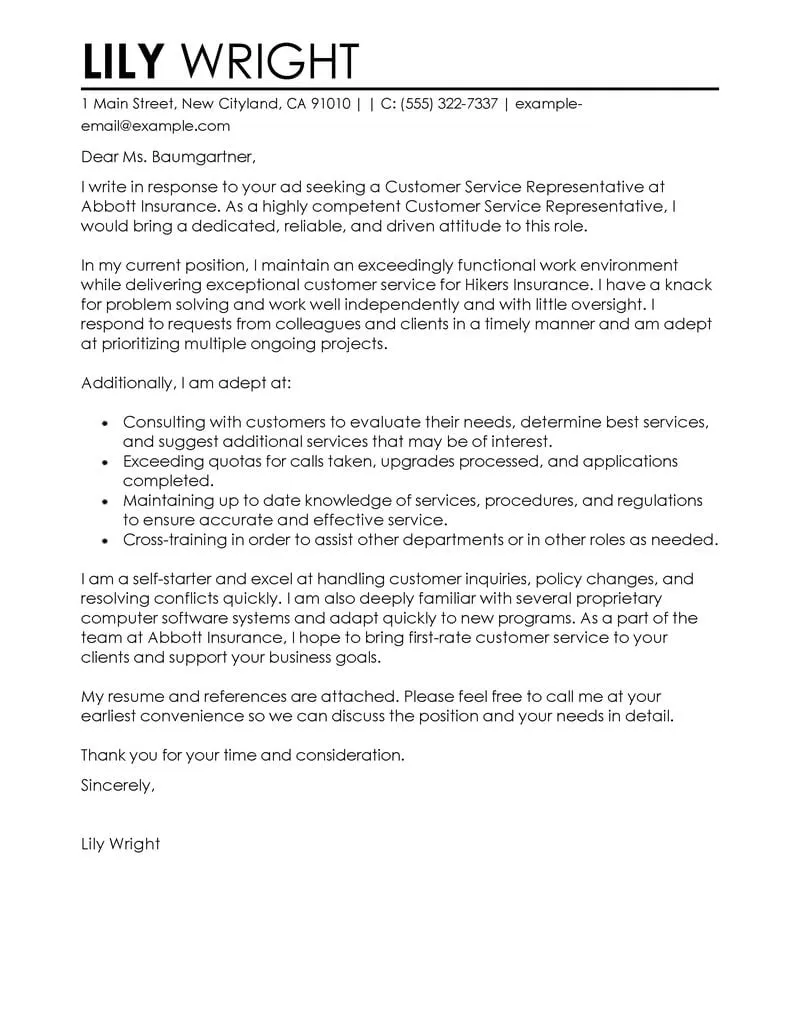
Always tailor your cover letter to the specific job you are applying for and the company’s needs. Review the job description carefully and identify the key skills and experiences the employer is looking for. Use these keywords and phrases throughout your cover letter. Show that you understand the company’s mission, values, and challenges, and explain how your skills can contribute to their success. This demonstrates that you are genuinely interested in the role and have the qualities necessary to excel. Avoid using a generic cover letter; a personalized letter shows you’ve taken the time to understand the opportunity.
The Closing: Call to Action
End your cover letter with a strong call to action. Express your enthusiasm for the opportunity and reiterate your interest in the role. Thank the hiring manager for their time and consideration. Include a call to action, such as ‘I am eager to discuss my qualifications further in an interview’ or ‘I look forward to hearing from you soon’. Provide your contact information again and express your availability for an interview. Ensure your closing paragraph is professional and leaves a positive impression.
Essential Elements of a Standout Cover Letter
A standout cover letter goes beyond the basics and showcases your unique strengths. It demonstrates your knowledge of the industry, your genuine interest in the company, and your ability to communicate effectively. By incorporating the right elements, you can create a cover letter that grabs the attention of the hiring manager and increases your chances of landing an interview. The key is to highlight both your soft skills and hard skills to make a strong, compelling case for why you are the best candidate.
Showcasing Soft Skills
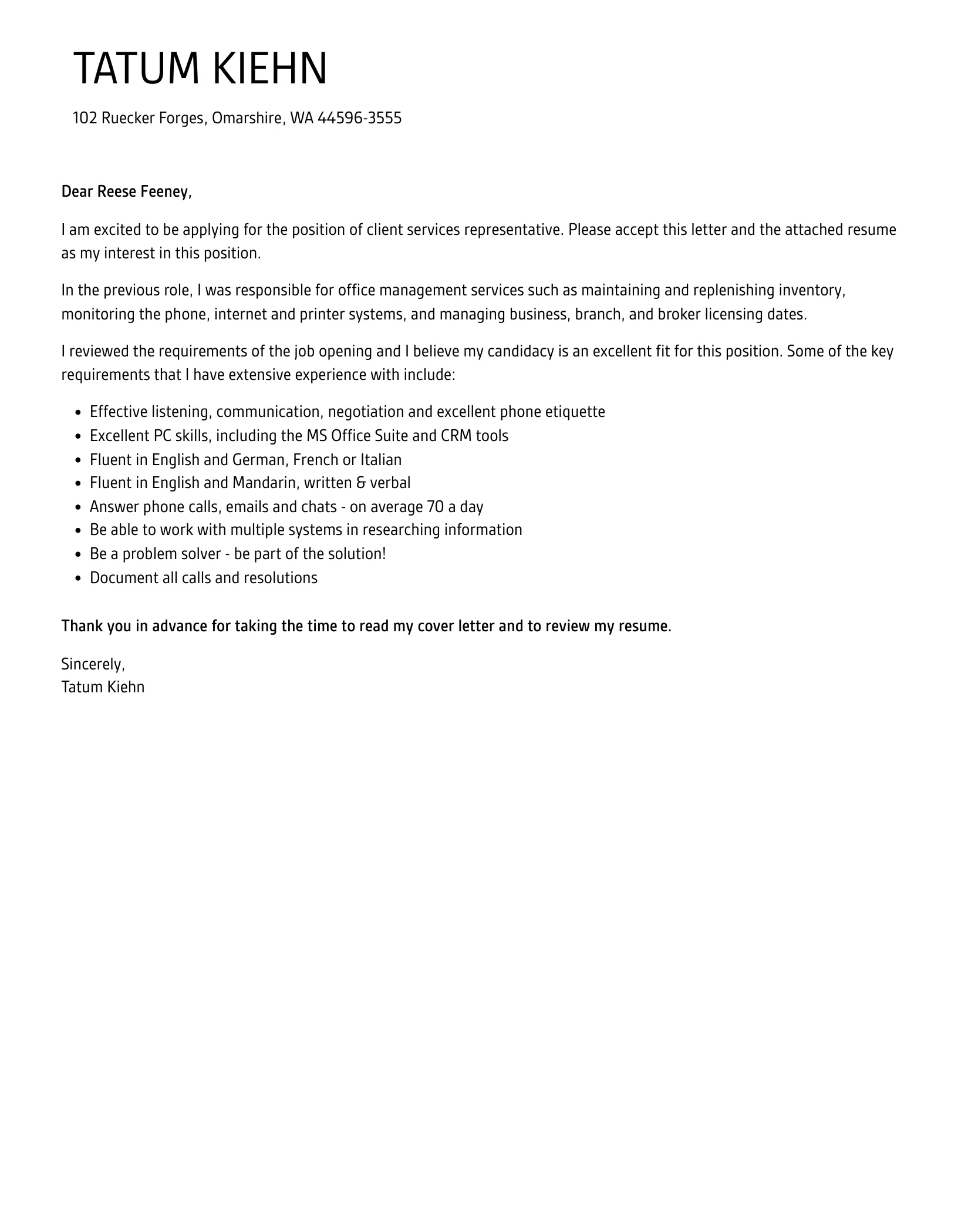
Soft skills are essential in client services. They enable you to build rapport, resolve issues effectively, and create positive customer experiences. Highlight skills such as communication, problem-solving, empathy, patience, and teamwork. Provide examples of how you have utilized these skills in previous roles. For instance, describe a situation where you successfully resolved a complex customer issue by listening attentively, showing empathy, and finding a solution that met the customer’s needs. Your soft skills demonstrate your ability to build strong relationships and provide exceptional customer service.
Communication Skills
Excellent communication skills, both written and verbal, are critical for a Client Services Representative. In your cover letter, provide examples of how you have effectively communicated with customers and colleagues. Describe situations where you have clearly and concisely explained complex information, resolved conflicts, or provided exceptional customer service through effective communication. Mention any training or certifications in communication or customer service that you possess. Your ability to communicate clearly and professionally is essential to succeed in this role. Highlight your use of active listening skills and your ability to understand and respond to customer needs.
Problem-Solving Abilities
Client Services Representatives need strong problem-solving skills. Demonstrate your ability to identify issues, analyze them, and develop effective solutions. Describe how you have successfully resolved customer complaints, handled difficult situations, and found creative solutions to improve customer satisfaction. Give examples of how you have used critical thinking to solve problems, such as analyzing customer feedback to identify recurring issues or creating solutions to improve customer service processes. Show you can think on your feet and find solutions.
Empathy and Patience
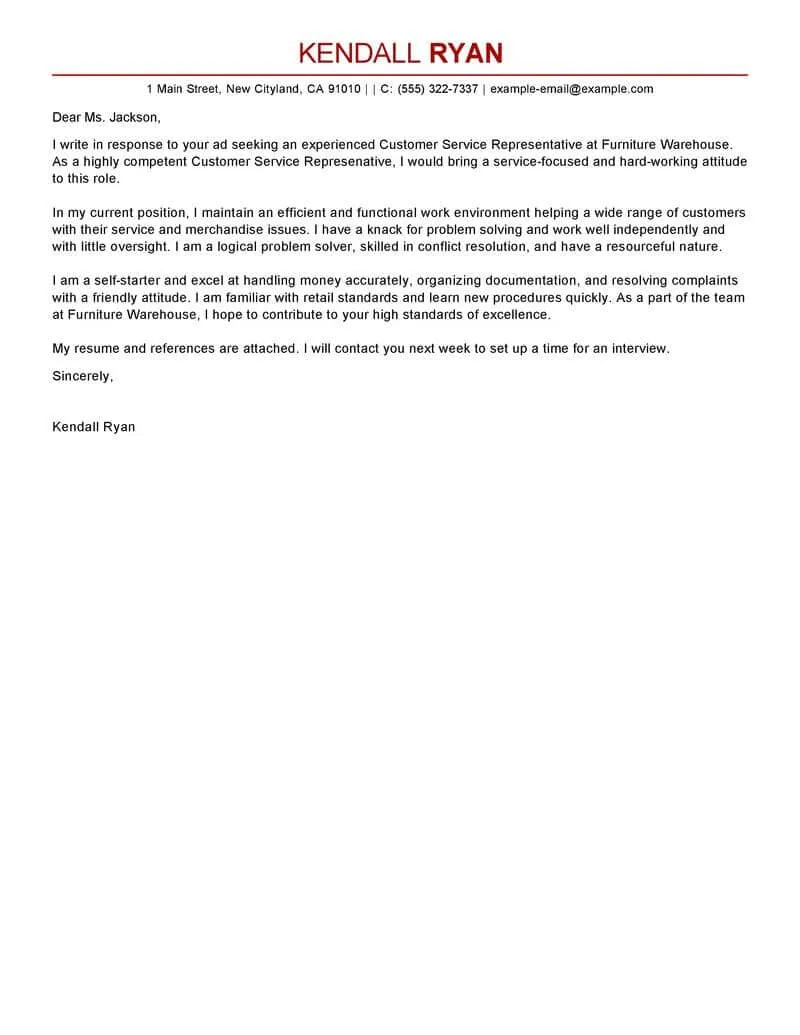
Empathy and patience are essential traits for building trust and resolving customer issues. In your cover letter, provide examples of how you have shown empathy and patience in your interactions with customers. Describe situations where you have remained calm and understanding during a difficult customer interaction, actively listened to their concerns, and provided support. Show how you went the extra mile to ensure customer satisfaction. These soft skills demonstrate your ability to build strong relationships and provide exceptional customer service.
Demonstrating Hard Skills
While soft skills are essential, highlighting your hard skills is just as important. These skills provide tangible evidence of your technical capabilities and your ability to perform the required tasks of the job. Show proficiency in any CRM software you have experience with, data analysis, and reporting skills. Your hard skills demonstrate your ability to handle the technical aspects of the role. Provide examples of how you’ve used these skills in previous positions.
CRM Software Proficiency
Client Services Representatives frequently use CRM software to manage customer interactions. If you are familiar with CRM software, be sure to list the specific programs you have experience with, such as Salesforce, Zendesk, or HubSpot. Briefly describe your experience with these tools, including how you have used them to manage customer data, track interactions, and resolve issues. Your proficiency with relevant software shows employers that you can quickly adapt to their systems and efficiently manage customer relationships.
Data Analysis and Reporting
Demonstrate your ability to analyze data and generate reports that provide insights into customer behavior, trends, and satisfaction levels. Describe any experience you have with analyzing customer data, identifying key performance indicators (KPIs), and creating reports to improve customer service processes. Highlight skills such as using data analysis tools, interpreting customer feedback, and using your insights to solve problems or improve customer service strategies. Your ability to analyze data and create insightful reports demonstrates your value to a company and your ability to help improve customer satisfaction.
Examples and Specifics
To effectively showcase your skills and experience, include specific examples in your cover letter. These examples should demonstrate how you have applied your skills in real-world situations and achieved measurable results. Providing specific examples is far more compelling than making vague claims. This shows that you are an achiever.
Highlighting Customer Service Experience
Use specific examples to illustrate your customer service experience. Describe situations where you went above and beyond to assist a customer, resolved a complex issue, or exceeded customer expectations. Provide details about the challenges you faced, the actions you took, and the positive outcomes you achieved. Quantify your achievements whenever possible. For example, ‘Consistently exceeded customer satisfaction targets by 15% by providing personalized service and proactive issue resolution.’ These examples demonstrate your ability to provide excellent customer service and build strong customer relationships.
Addressing Specific Job Requirements
In the job description, identify the key requirements and tailor your cover letter to address them directly. Provide specific examples from your experience that match each requirement. For instance, if the job description mentions ‘Experience with conflict resolution,’ describe a time when you successfully resolved a customer dispute by active listening, empathy, and finding a mutually agreeable solution. This shows the employer that you have carefully read the job description and that your skills and experiences are a good match for the position. Addressing the job requirements directly will help you stand out from other candidates.
Formatting and Proofreading
The formatting and proofreading of your cover letter are critical to making a positive impression. The layout should be professional, easy to read, and error-free. Poor formatting and errors will make it difficult for the hiring manager to take your application seriously.
Font and Layout
Choose a professional font, such as Times New Roman, Arial, or Calibri. Ensure the font size is easy to read (typically 11 or 12 points). Use clear and concise language. Use headings, subheadings, and bullet points to break up large blocks of text and make your letter visually appealing. Maintain consistent formatting throughout the letter, including spacing, margins, and alignment. A well-formatted letter is easier to read and demonstrates your attention to detail.
Proofreading Checklist
Before submitting your cover letter, carefully proofread it for any errors in grammar, spelling, and punctuation. Use a grammar checker and spell checker. Read the letter out loud to catch any awkward phrasing or missing words. Ask a friend or family member to review your letter for a fresh perspective. Ensure your contact information is correct. Double-check the company name and hiring manager’s name. Proofreading shows that you take pride in your work and demonstrates your attention to detail.
Finalizing and Submitting Your Cover Letter
Once you are completely satisfied with your cover letter, review it one last time before submitting it. Ensure it aligns with the job description, highlights your key skills and experiences, and demonstrates your genuine interest in the role. Save your cover letter as a PDF file, as this format preserves the formatting and layout. Follow the application instructions carefully, and submit your cover letter along with your resume and any other required documents. After submitting, follow up with the company to express your continued interest in the position.
